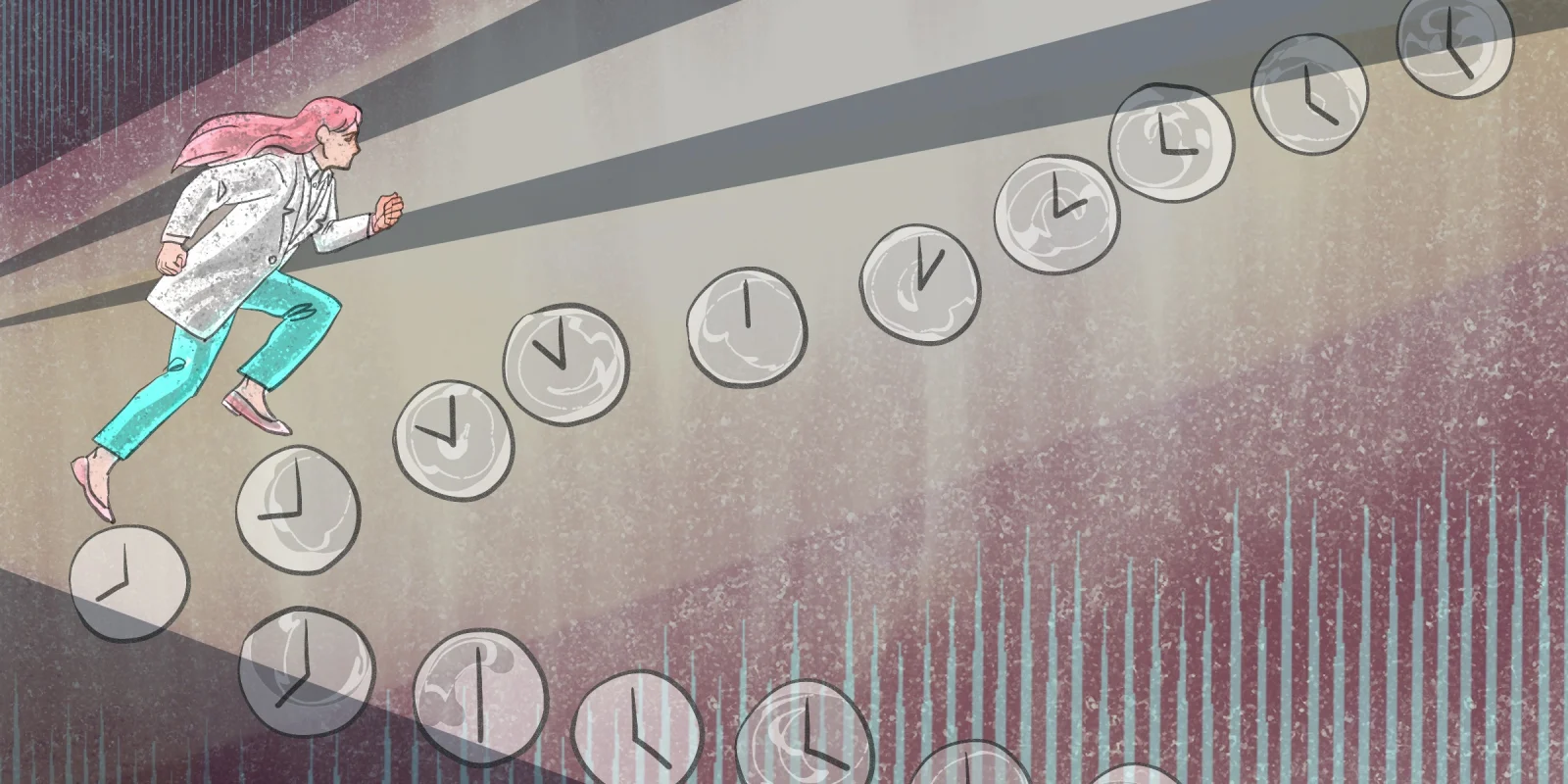On morning rounds we keep things snippy, no visitors, no chit-chats. We dash from floor to floor and room to room where the patients are inevitably asleep or trying to sleep, because it’s always well before sunrise, and who wants to be rudely awakened by a bright light and a looming figure in scrubs who pulls up your hospital gown before you have time to protest, saying “sorry my hands are cold,” and then proceeds to jam on your belly. How’s your pain? Have you passed gas? Have you walked? Have you peed? Did you vomit? And on to the next patient. We ask the same questions again and again until it’s time for us to go to the clinic or to the OR and all other parts of the day that fall in between. Often it feels like there is rarely a moment to take a breath, and part of that is actually what I love about surgery — always being on the move and always thinking. We are decisive and efficient.
That being said, I recently found myself in a situation where I started to question the efficiency mindset, or rather the desire to always act quickly, and I found it in the most surprising of places. I was paged to a Level 1 trauma and my team beat the patient to the resuscitation bay. All we knew was that the trauma coming in was stabbed multiple times, and at least once in “the box” (somewhere ominously between the clavicles, nipples, and xiphoid). As we waited, we dutifully prepped the thoracotomy tray and the chest tube kits, but when the patient arrived he was not in extremis. Nonetheless, he was extremely tachycardic, we couldn’t find a great pulse, and, as promised, he had a few stabs, one right in the box. He was agitated but was able to tell us his name.
Immediately I think of the advanced trauma life support algorithm we used to run all traumas, airway, breathing, circulation — it’s a soothing algorithm, the “ABCs” — and I am certain we are going to intubate him, line him up, start massive transfusion protocol, and head to the OR. But much to my surprise, as anesthesia is gathering intubation meds, my attending asks us to stop. No intubation? I look at my chief, confused — we aren’t intubating? As large bore IVs go in, I try to be useful and complete the FAST exam to look for free fluid in the abdomen (there was no free fluid around the heart). I am very distressed by the patient’s shoddy vitals and the fact that it feels like we have been in the trauma bay forever, when we instead should be rushing off to the OR. As the massive transfusion protocol runs and the X-ray board is shoved under the patient’s chest, I watch the flashing digital read clock/timer above the patient’s stretcher and realize we have been in the bay for at least 10 minutes. We take another manual blood pressure and all of a sudden, we get a real pressure and the patient — while still agitated — is much less tachycardic. Now a good 20 minutes after the patient arrived, we go calmly to the OR.
In the elevator going up to the ORs, with the patient still awake, I realized what a tenuous situation he was in when he arrived — on the tightrope between life and death. I knew that had I been alone running that trauma (as sometimes does happen), I would have killed this patient. I would have intubated him immediately.
We are taught to make split-second decisions, but sometimes these decisions are horribly wrong. In retrospect, even the thought to intubate him was reckless. He was so unstable he would have crashed from the rapid sequence of intubation meds alone, and if not from that, then he’d have coded from the positive pressure ventilation decreasing venous return to his already almost empty heart. He’d have ended up with ED thoracotomy and a trip to the morgue. That being said, I know I’m not the only resident who would have thought to intubate first because he was unstable and we all knew he was going to the OR anyways.
The thinking was flawed. Unlike my attending, I did not stop to take a pause and look at the nuance of the situation.
Even in situations of chaos and stress, like the resuscitation bay, there are always at least a few seconds to take a breath — to consider the whole clinical picture before you intubate, or to think about your anatomy before you slice to place a chest tube. These pauses are brief periods of mindfulness, and they can help us be better doctors, especially in the most critical moments of patients' lives.
When has pausing before making a decision helped you? Share in the comments.
Caitlin J. Cain is a second-year surgical resident at New York Presbyterian/Weill-Cornell Medical Center. She is an aspiring pediatric surgeon and is interested in medical humanities as a means for enhancing clinical practice, and was a 2022–2023 Op-Med Fellow. Follow her on twitter @joelle_caitlin.
Illustration by April Brust







